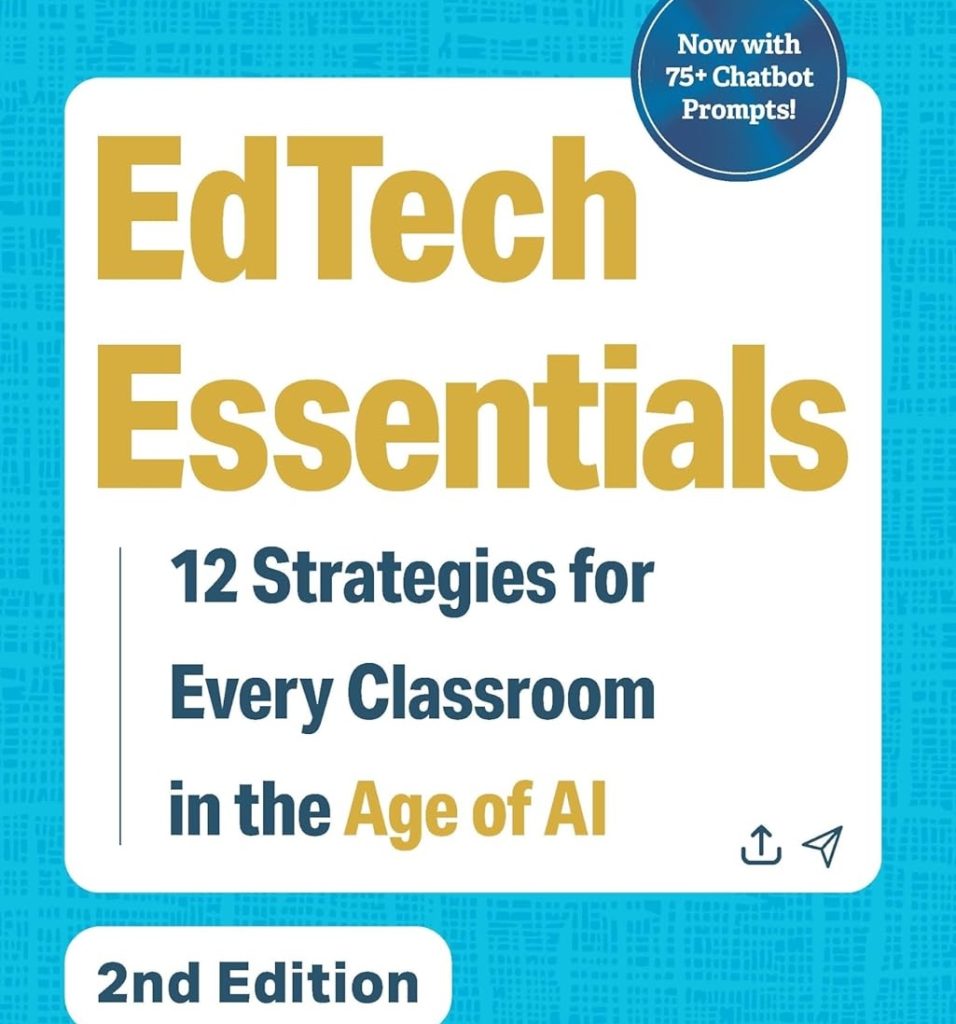
The brain is an incredible machine with immense potential. When we are born, our brains are wired to learn from, and adapt to, our environment. Given what we know about the brain’s unique malleability in the first years of life, young people’s need for purposeful support and education seems obvious during this period.
However, upon looking at the current state of early childhood education and care, there is a clear mismatch between what is and what should be. In this article, I will touch on how remarkably powerful early education can be, and that through current practices, we are missing a huge opportunity to prepare ourselves for the future.
Brain Science of the Early Years
Within a handful of weeks of conception, even before some mothers know they are pregnant, children’s brains begin forming. By the time a child is born, she has most all of the neurons she will ever have: about 100 billion of them (Perry, 2002). Also occurring before birth is the formation of the first synapses, which are the connections between the neurons. These neural connections allow the brain to learn and function.
Because of this prenatal formation of synapses, incredibly, newborns are able to show a preference towards their mothers’ voices (Querleu, et al., 1984). These prenatal synapses also enable neonates to cry with a cadence that matches that of their mothers’ native language (Mampe, et al., 2009). Even before we are born, we are learning.
Over the first few years of life, the brain continues making connections between the neurons, to the tune of about 700 to 1,000 synapses every second (Center on the Developing Child). The rate of synapse formation peaks between 1 and 2 years of age (Kostović, et al., 1995), and by 2 or 3 years of age, the brain has about twice as many synapses as it will have as an adult (Corel, 1975). Starting at some point in childhood and lasting through adolescence, the brain gradually and systematically prunes away the surplus synapses that are not sufficiently reinforced through experience and behavior (Huttenlocher, 2002).
Here’s the key point: The purpose of the proliferation of synapses, only for them to be pruned away, is to capture and incorporate early experiences. This is, presumably, evolution’s way of allowing us to adapt to our environment. The brain then prunes away the unused synapses, allowing it to function efficiently.
In the same way, a fisherman ensures he makes a catch by casting a wide net. He then reels it in, taking with him only what he needs.
Because this pruning process starts early on, early experiences that are reinforced throughout the pruning process become deeply embedded in the brain’s architecture. This neural architecture then becomes the foundation that supports future learning.
Just as a house is built on a strong foundation, future learning depends on the foundation that is laid in the first years of life. A weak initial foundation does not doom an individual, though attempting to change behavior later on cannot be done as easily.
Investment in Young Children Is Good for Everyone
This quick review of research makes it clear that we must invest in education for young children. Many studies have highlighted that individuals with access to quality early childhood education enjoy both short-term benefits (see Outcome Evaluation of Washington State’s Early Childhood Education and Assistance Program which found positive academic gains for students in third, fourth, and fifth grade), and, more importantly, many long-term benefits as well.
There are two often-cited projects that help to make my point: the Abecedarian Project and the Highscope Perry Preschool study.
At 21 years of age, individuals who were enrolled in the Abecedarian program as preschoolers earned higher scores on intellectual and academic measures, attained more years of total education, were more likely to attend a 4-year college, and had lower rates of teenage pregnancy (Campbell, et al., 2002).
At 40 years of age, individuals who passed through the Perry Preschool program, on average, had higher earnings, were more likely to hold a job for a longer period of time, had been convicted of fewer crimes, and were more likely to have graduated from high school than adults who did not go to preschool (Schweinhart, et al., 2005).
Economic studies of investment in early childhood education have also found societal returns on various programs that range from about $7 to $10 per dollar invested (e.g. Reynolds, et al., 2011; Heckman, et al., 2010). The primary sources of societal benefits came through avenues such as increased tax revenues, averted criminal justice system and victim costs, and savings on child welfare, special education, and grade retention.
The benefits both to the individual and to society created by quality early childhood investment are undeniable. No longer does a case need to be made for if we are to invest in young children, but rather, how to invest in young children.
The State of Early Childhood Education
Excellent. We have the science. We have a good understanding of the general trajectory of brain development. We have confirmed that individuals tend to be much better off across the lifespan with quality experiences over the first few years of life. In fact, we have shown again and again that society benefits from early investment in people.
It only makes sense that in the most powerful nation to have ever existed, a country with access to immense resources, we would invest in ourselves at a time when we can make the strongest impact, in order to ensure a strong future.
Well, actually, that may not be the case. In fact, it’s not looking too good. Let’s take a brief look at what is actually happening, and you can decide for yourself.
Early Enrollment
How many of our nation’s young people attend preschool? The quick answer is about half. From 2012 to 2014, only 47% of 3- and 4-year-olds in the US (3,890,000 in total) were enrolled in any preschool (The Anne E. Casey Foundation, 2016). There is a swing of about 8% for families earning at or above 200% of the poverty line (55% of these 3- and 4-year-olds are enrolled) and those earning below 200% of the poverty line (39% enrolled). The enrollment rates of children younger than 3 are, presumably, even lower across the board.
Tragically, children of families earning less are enrolled at lower rates; Studies say that these children stand to gain the most from high-quality intervention (e.g., Karoly, et al., 1998, as cited in Reynolds, et al., 2011).
Though maybe it’s better that only half of young children are enrolled in preschool. The students would not stand to benefit if these preschools were of low-quality. Whether or not this is the case (though especially if it were), we have a phenomenal opportunity to improve the future standing of our nation by creating access to high-quality preschool for more than just half of our young people.
Teacher Pay
To think that so many of the nation’s three- and four-year-olds might not be getting the experiences needed to help them lay the groundwork for their future, for academics, career, and life, leaves me flustered. This feeling is only exacerbated when I learn about the preparation and benefits for those charged with setting these young citizens up for success. First things first: teacher pay.
In June of last year, the Department of Education released a report entitled, “High-Quality Early Learning Settings Depend on a High-Quality Workforce: Low Compensation Undermines Quality.” The name says it all, doesn’t it?
According to this report, the median salary for a preschool teacher in the U.S. is $28,570. That figure jumps up above $50,000 at the kindergarten and elementary levels. This disparity alone creates a disincentive for teachers to pursue a career teaching preschool — or to pursue teaching at all, for that matter.
Even the two states that come the closest to attaining pay parity fall short; teachers in Louisiana and Oklahoma still only earn 84% and 83% of what kindergarten teachers take home, respectively. And in 13 states, preschool teachers earned less than half of the annual wages earned by kindergarten teachers.
What is really spirit-crushing is that in six states (you know who you are), the annual wages for preschool teachers were less than the 2015 poverty threshold for a family of four. Yes, you read that correctly: some preschool teachers qualify as being in poverty.
While improving teacher pay alone won’t evaporate all of our early childhood education woes, it certainly will help to attract and keep talent.
Teacher Preparation
The level of teacher preparation for the preschool centers also leaves much to be desired. As of the June 2016 report, only 24 states have at least one preschool initiative that requires lead teachers to hold a Bachelor’s degree with a specialized concentration in early childhood. Also, across the country, only 45% of all preschool teachers working with children ages three to five have Bachelor’s degrees.
It is hard to make a case for increased pay when teachers are underprepared. Yet, teachers may not become masters of their craft unless there exists some extrinsic incentive to do so, be it increased salary, benefits, prestige, etc. Attempting to improve the field of early childhood education brings with it many problems. While teacher preparation and benefits are only two of the issues, I do not foresee the field progressing without redressing both of them.
Hope…?
Things looked promising back in 2013. President Obama released a plan to provide early education for all Americans. Sounds great, right? The plan incentivized states to expand access to high-quality public preschool for four-year-olds living at or below 200% of the poverty line, done through a cost-sharing program. The plan laid out benchmarks that states needed to meet in order to access funding, including state-level standards for early learning, qualified teachers, and data and assessment systems. The plan would have supported families of young children through other means as well.
However, funding for the “Preschool for All” initiative relied solely on passing a 94% increase on the federal tobacco tax, which may be why the program has not been enacted. However, after first appearing in the 2015 budget proposal, “Preschool for All” has also appeared in the proposed budgets for 2016 and 2017. Take this into consideration with the fact that the word “preschool” appeared in the proposed 2013 budget a grand total of zero times, for now, I find some comfort in knowing it has at least stayed on the national political agenda.
It’s also good to know that investment in early childhood ostensibly has bipartisan support. According to a 2016 report from the Education Commission for the States, for example, in the 2015-16 school year, Republican governors in 22 states and Democratic governors in 10 states (and also the policy makers for D.C.) increased funding for preschool programs.
Despite the five states (with governors of both parties) that decided to decrease preschool funding, the recognition of the importance of preschool overall seems to be steadily growing — albeit slowly. From the previous year to the current one, state funding on preschool programs across the country increased by 12%.
Things seem to be moving in the right direction, overall. In the 2013 Preschool for All proposal, the federal government acknowledges that it would “invest critical resources where we know the return on our dollar is the highest: in our youngest children.” Yet, despite knowing these monies have the chance to be the most efficacious, the initiative relies solely on a huge tax increase on tobacco products, of all things. These priorities don’t match up.
If you truly believe that “the return on our dollar is the highest” with a given investment, shouldn’t there be a greater push to make it happen? With funding contingent on nearly doubling the tax of some unrelated product, this plan does not convey the sense of urgency needed to move the needle on early childhood investment.
This isn’t the first time the federal government shot down a proposal to provide broader access to early childhood care, either. The Comprehensive Child Development Act of 1971, which would have established a national day care system for working families, was approved overwhelmingly by the Senate. It was, however, vetoed by president Nixon in 1972. (Here is a story from NPR.) In this case, the political climate seemed to be the primary driver in deciding the bill’s fate.
Even though they may not have had the science underscoring the importance of experiences during early childhood, the notion was understood. Nixon had been previously quoted as saying, “What happens to the child from a nutritional standpoint, from an educational standpoint, from an environmental standpoint in the years between one and five may affect that child for the balance of his life regardless of what may happen after that time.” And yet, he signed the veto.
Well, now we have the science confirming what we’ve thought all along. So what are we going to do about it?
Constructive Dissatisfaction
Who’s to say that increasing the federal budget for universal preschool would be the best way to go? I am not promoting any one solution to providing early childhood education and care. Though I am championing the idea that these are extremely formative years. During this time, a groundwork is laid that stays with an individual across the lifespan. Ensuring that young people have quality experiences during this time stands to benefit everyone.
We don’t have all of the answers yet, but we do know that our notion of daycare as it has historically been, simply ensuring the physical and perhaps mental well-being of young children, neglects to capitalize on what the science has revealed about this period.
As cognition comes online in the first years of life, it is at its most malleable. Learning is a gradual process; future learning depends on past learning, new experiences build on previous ones. Science has made clear that experiences during this time can have lifelong consequences. We know that educational investments are most efficacious during this period, and without these critical investments, potential is lost.
Though don’t get me wrong, I am trying to not use alarmist hyperbole in an attempt to garner support for the cause. Life will go on regardless of what happens in this arena, just as it has. Children born to families with access will continue to enjoy quality early experiences; not much would change for them either way. And individuals whose first years of life lack these quality experiences will continue to enter kindergarten and first grade already at a disadvantage, just as they have been doing all along.
Jack Shonkoff, director at the Center on the Developing Child, often uses the phrase “constructive dissatisfaction” to describe what he hopes people would feel when presented with the reality of the system currently in place to educate and care for our youngest citizens. He hopes that the discontentment created by the recognition of the discrepancy between what we know ought to be taking place and what is actually taking place would provide the impetus for action.
I hope that you, like me, are constructively dissatisfied. Change won’t be easy. Nor do we know exactly what it will take to ameliorate the preschool problem. Though we do know that it needs to happen. The science is clear: investing in young people is a no-brainer.
References
The Anne E. Casey Foundation. (2016). Young children not in school. Retrieved from: http://datacenter.kidscount.org/data/tables/9010-young-children-not-in-school?loc=1&loct=1#detailed/1/any/false/1443,1218,1049,995,932/any/17975,17976
Campbell, F. A., Ramey, C. T., Pungello, E., Sparling, J., & Miller-Johnson, S. (2002). Early childhood education: Young adult outcomes from the Abecedarian Project. Applied Developmental Science, 6(1), 42-57.
Center on the Developing Child. Brain Architecture. Retrieved from: http://developingchild.harvard.edu/science/key-concepts/brain-architecture/
Corel, J. L. (1975). The postnatal development of the human cerebral cortex. Cambridge, MA: Harvard University Press.
Department of Education. (2016). High-quality early learning settings depend on a high-quality workforce: low compensation undermines quality. Retrieved from: https://www2.ed.gov/about/inits/ed/earlylearning/files/ece-low-compensation-undermines-quality-report-2016.pdf
Heckman, J. J., Moon, S. H., Pinto, R., Savelyev, P. A., & Yavitz, A. (2010). The rate of return to the HighScope Perry Preschool Program. Journal of Public Economics, 94(1), 114-128.
Huttenlocher, P. R. (2002). Neural plasticity. Harvard University Press.
Karoly, L. A., Greenwood, P. W., Everingham, S. M. S., Hoube, J., Kilburn, M. R., Rydell, C. P., et al. (1998). Investing in our children: What we know and don’t know about the costs and benefits of early childhood interventions. Santa Monica, CA: RAND Corporation.
Kostović, I., Judaš, M., Petanjek, Z., & Šimić, G. (1995). Ontogenesis of goal-directed behavior: Anatomo-functional considerations. International Journal of Psychophysiology, 19(2), 85-102.
Ludden, J. (2016, October 13). How Politics Killed Universal Child Care In The 1970s. Retreived from: http://www.npr.org/2016/10/13/497850292/how-politics-killed-universal-childcare-in-the-1970s.
Mampe, B., Friederici, A. D., Christophe, A., & Wermke, K. (2009). Newborns’ cry melody is shaped by their native language. Current Biology,19(23), 1994-1997.
Parker, E., Atchison, B., & Workman, E. (2016). State pre-k funding for 2015-16 fiscal year: National trends in state preschool funding. 50-state review. Education Commission of the States.
Perry, B. D. (2002). Childhood experience and the expression of genetic potential: What childhood neglect tells us about nature and nurture. Brain and Mind, 3(1), 79-100.
Querleu, D., Lefebvre, C., Titran, M., Renard, X., Morillion, M., & Crepin, G. (1984). Discrimination of the mother‘s voice by the neonate immediately after birth. European Journal of Obstetrics, Gynecology, & Reproductive Biology,13(2), 125-134.
Reynolds, A. J., Temple, J. A., White, B. A., Ou, S. R., & Robertson, D. L. (2011). Age 26 cost–benefit analysis of the child‐parent center early education program. Child Development, 82(1), 379-404.
Schweinhart, L. J., Montie, J., Xiang, Z., Barnett, W. S., Belfield, C. R., & Nores, M. (2005). Lifetime effects: the High/Scope Perry Preschool study through age 40. Ypsilanti, MI: High/Scope Press.
Washington State Institute for Public Policy. (2014). Outcome evaluation of Washington state’s early childhood education and assistance program. Retrieved from: http://www.wsipp.wa.gov/ReportFile/1576/Wsipp_Outcome-Evaluation-of-Washington-States-Early-Childhood-Education-and-Assistance-Program_Report.pdf
The White House Office of the Press Secretary. (2013, February 13). Fact sheet: President Obama’s plan for early education for all Americans. Retrieved from: https://obamawhitehouse.archives.gov/the-press-office/2013/02/13/fact-sheet-president-obama-s-plan-early-education-all-americans






